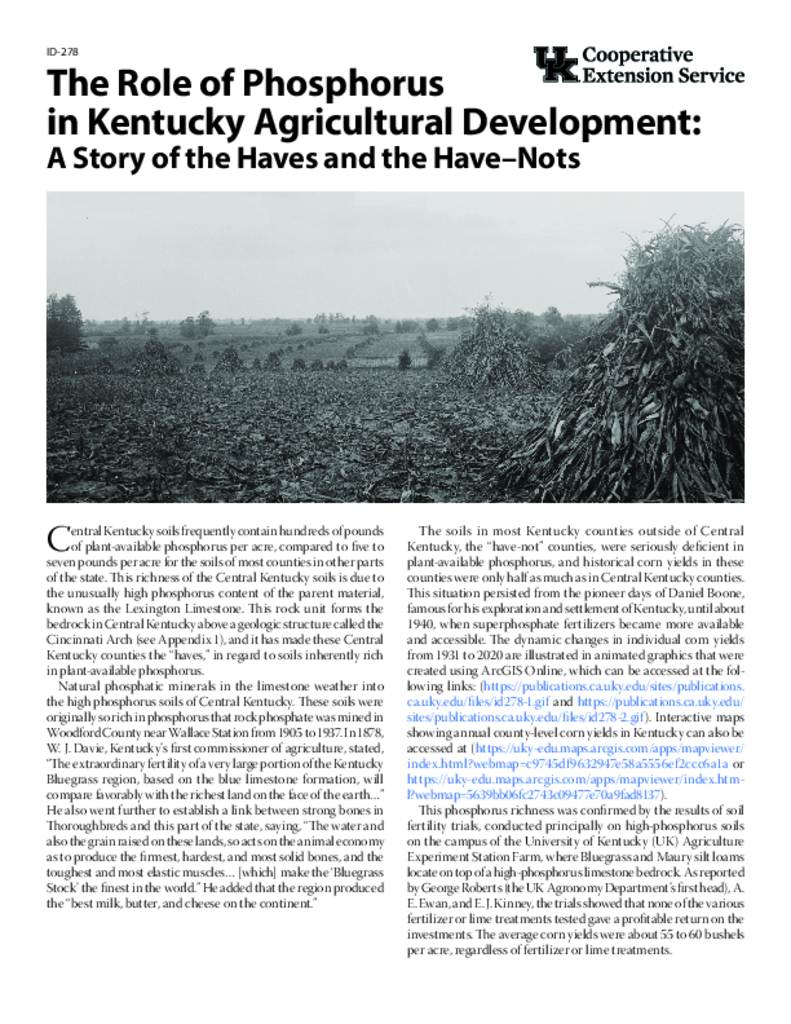The Role of Phosphorus in Kentucky Agricultural Development: A Story of the Haves and the Have–Nots
The Role of Phosphorus in Kentucky Agricultural Development: A Story of the Haves and the Have–Nots
Abstract
Central Kentucky soils frequently contain hundreds of pounds of plant-available phosphorus per acre, compared to five to seven pounds per acre for the soils of most counties in other parts of the state. This richness of the Central Kentucky soils is due to the unusually high phosphorus content of the parent material, known as the Lexington Limestone. This rock unit forms the bedrock in Central Kentucky above a geologic structure called the Cincinnati Arch, and it has made these Central Kentucky counties the “haves,” in regard to soils inherently rich in plant-available phosphorus.
Core Details
Publication Date
July 24, 2025
Categorical Details
Keywords
Corn, Kentucky, Bluegrass, Phosphorus, Limestone
© 2025 University of Kentucky, Martin-Gatton College of Agriculture, Food and Environment

